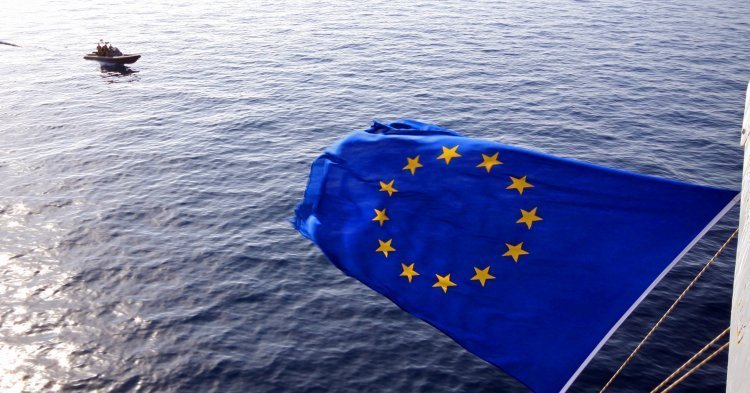During her speech to the European Parliament on 13 November 2018, the German Chancellor Angela Merkel also confirmed her desire to move towards a “true European army”. While we can only welcome the fact that the two biggest member states of the European Union want to build a common defence force, a certain scepticism remains, given the developments in the last years or even last months. Beyond these announcements, is this project wishful thinking or a realistic horizon?
No European army without a federal Europe
In the current context, it would be easy and even justified to consider that the creation of a true European army is wishful thinking. Indeed, it would imply a merger or a pooling of national armies for a federal one, based on the American model.
This idea is conceivable at a strictly military and industrial level. However, it is impossible in the short term because of the current political state of the European Union. A European army means not only the establishment of a single command but also the imposition of political power and, logically, foreign policy or intelligence. Indeed, I believe that if a European army were to be created, its creation must derive from the exclusive competence of the European Union, otherwise the project will remain confined to cooperation agreements between Member States.
This new paradigm would induce the constitution of a federal Europe, endowed with a European Parliament and government, independent from Member States, as they would be directly elected by the citizens. This project must be a horizon for the future of the European Union but it is a distant one.
Still, the fact that the leaders of the two most powerful countries of the Union have mentioned this project is significant in many respects. It shows a strong awareness: Europe can no longer solely rely on NATO to defend itself. The European Union was in ruins after the Second World War and it was thus justified to rely on a strong partnership with the United States. However, today, this is no longer the case.
Furthermore, the apparition of new threats through the rising power of China and Russia, coupled with the persistence of a deteriorated environment in Africa and the Middle East, naturally leads a great number of countries to increasing their defence efforts. Even though a war on the European Union’s territory seems unlikely, an armed conflict at the South China Sea would not be without consequence as two thirds of the world’s maritime traffic takes place there. Serious tensions with Russia, with a limited conflict in the Baltic states, are also a credible threat to our security, as is the recent escalation of tensions at the door of the European Union between Ukraine and Russia.
An independent European defence: an investment which is not merely military
Despite a real awareness on the matter, European countries are continuing to rely on a kind of implicit consensus with the United States. NATO is the illustration of this “deal”: in return for their protection, the United States massively sell weapons to European countries. We should keep in mind that the United States spend 2.5 times more for their army than European countries do. The observation made by several countries (in particular in Central and Eastern Europe) is simple: French, German or Italian armies will offer too little counterweight in the event of a conflict at the Eastern external borders of the EU. For them, only the United States have the necessary military force.
To make sure that these countries can count on a European defence capacity, European countries will have to increase their budget dedicated to the military. This important effort is necessary if Europeans want to restore their sovereignty in defence matters. If the European construction is a project for peace which has gathered more than twenty countries, nobody can ignore external threats at our common borders.
A fair question arises: why use public money for arms procurement and not for ecological transition? To which I would reply that one doesn’t exclude the other but that these two engagements are necessary.
Getting involved in this process will lead to development of our industry and will foster very qualified jobs supported by innovations which afterwards benefit the civilian sector. A modern, well-equipped and trained army isn’t only about tanks and fighter planes. It is also an investment in transport aircraft and helicopters which are used as part of humanitarian operations, boats which monitor our territorial waters, or surveillance of space-based activities to protect our Galileo satellites.
The next steps towards a European defence
Beyond the financial aspect, the development of a European defence industry (and not just a sum of national industries) and the common sharing of capacities are essential. On this point, several recent advances allow us to remain optimistic for the future.
We are witnessing a growing number of transnational units: transport squadrons and Franco-German brigades, common armored units between the Netherlands and Germany, European battalions in Baltic and Nordic countries. A new series of common programmes should get launched: fighter planes, battle tanks, maritime patrols… Finally, the creation of a European Defence Fund, amounting to €13 billion spanned across seven years) will strongly stimulate our capacity to develop our equipment. If the amount remains low, it is significant because it is concentrated on research and development (for example, France will spend €1 billion on R&D in 2020).
Thus, if the constitution of a European army seems a long-term goal, the short-term priority is to restore the military sovereignty of European states. This entails three steps: the rebuilding of military capacities via a regular budgetary effort, the constitution of a European defence industry, and the pooling of military capacities such as strategic transport, helicopters, and a high density of ground forces.
As one can see, even if a European army is still a distant horizon, its mere evocation by Angel Merkel and Emmanuel Macron marks a moment of strategic change. Built through economic means, the European Union is progressively becoming a political construction. However, an increase in the expenditure effort in the short term, combined with a stronger mutual aid and support, will allow for a progressive convergence towards a Europe with a strong and independent defence.



Follow the comments: |
|
